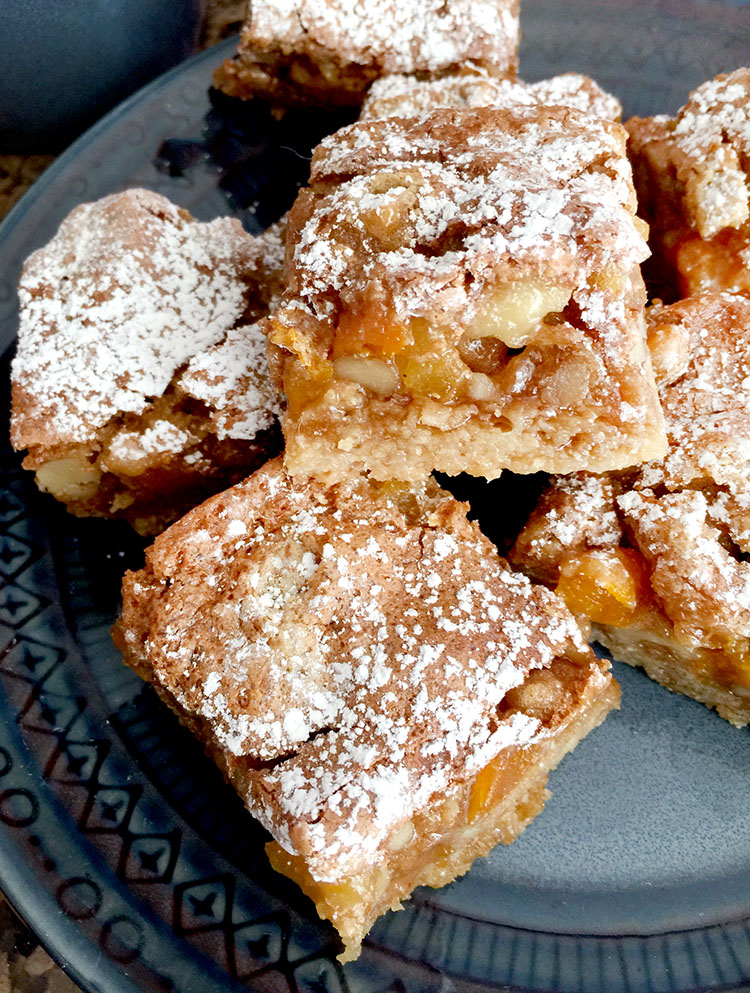
Our lack of rain this winter had me nervous and twitchy. I wanted to inspire more precipitation and thought I might get some sort of magic from visiting a place where water was not only flowing, but a source of power and purpose.
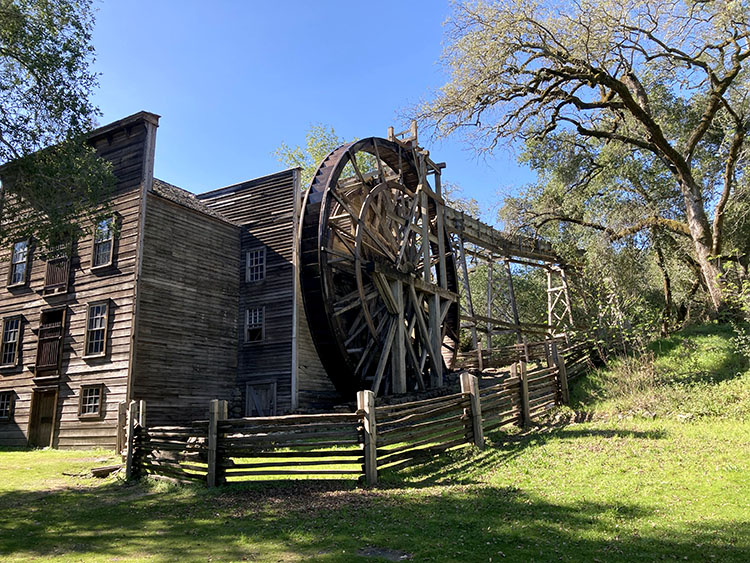
[I ]turned to the Bale Grist Mill Historic Park just beyond St. Helena in Napa. Surprisingly, I had not been there and had only heard of it within the last year, when our long dry spell conjured up mirages of running water so prevalent it could power an old grist mill. The weekend we finally visited this historic site, it was pre-spring, still green and still remarkably wet.
The peaceful park leads you on a short hike on a bridge over Mill Creek on this day bubbling along nicely, through trees until you meet the staggering sight of the giant old water wheel turning. It is like nothing you have seen (I certainly had not), between the immensity of the water wheel and the strangely Eastern US architecture of the mill’s buildings, you feel definitively that you have stepped through some sort of time veil and re-entered the past.

The Bale Grist Mill was built in 1846, and the mill and adjacent granary were active (and even the site of important community gatherings) through 1900, its 36-foot water wheel one of the largest of its kind. The mill went through significant restorations in the 1980s. The park now enjoys visitors every weekend to hike and explore the woodsy trails and the mill and granary, and on certain occasions, live milling demonstrations are offered (although that wasn’t happening when I visited). Milled flours and grains are even available for purchase.
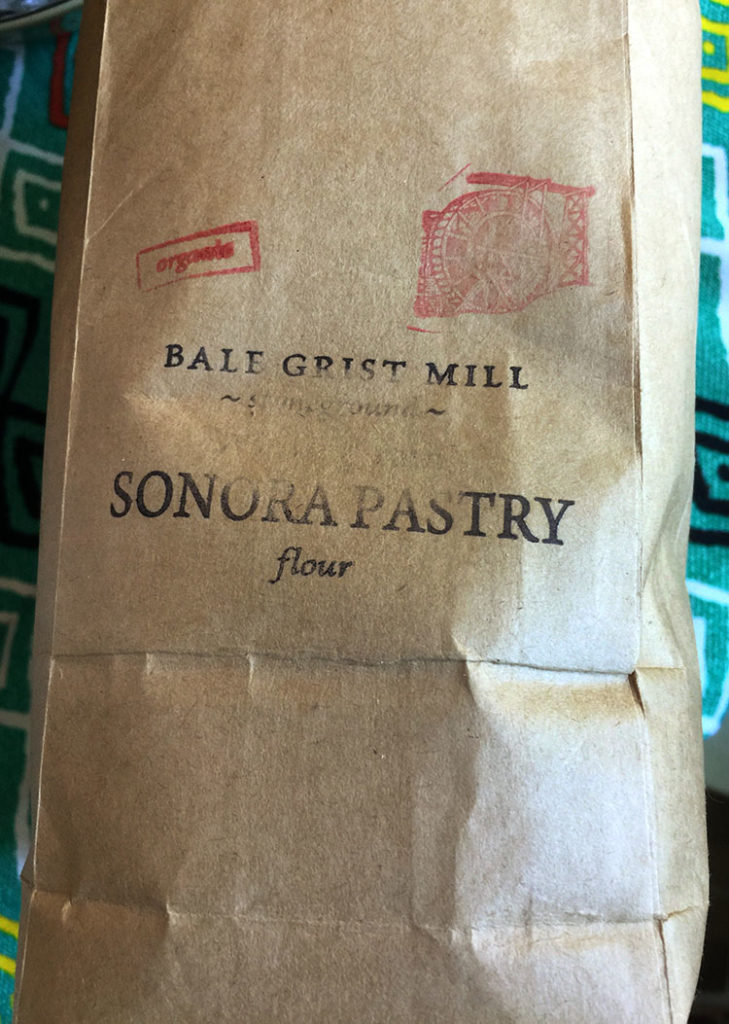
[I] decided to select a couple of the mill products to take home. Sonoran Pastry Flour, milled from Sonoran wheat, one of the oldest wheat varieties still available, is known for its softness. I decided to pick up a package of cornmeal, too, as so many good rustic recipes (I had a couple in mind) could come from it.
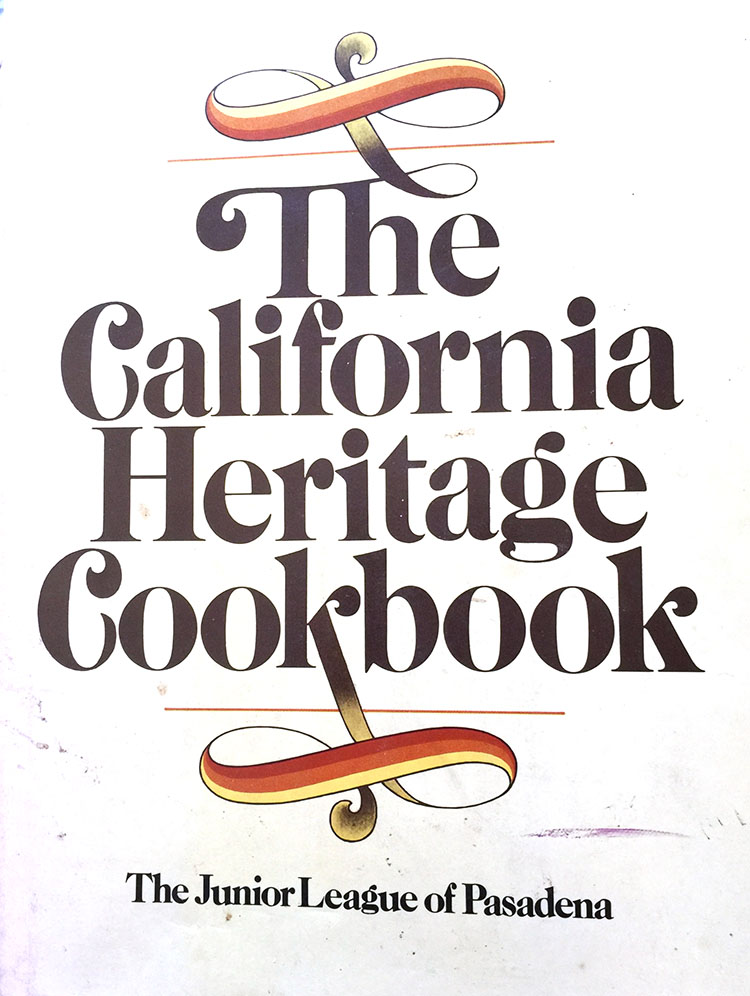
[I] turned to a cookbook with a California history theme for my first recipe to use some of the Sonoran Pastry Flour. “The California Heritage Cookbook” by the Junior League of Pasadena (Doubleday; 1976), is a vintage gem full of California recipes, broken up by categories, but also by regions of the state. I wanted to bake something uniquely Californian and found it in a recipe for Apricot Bars, that would utilize California’s bounty of fruit and nuts and make use of a flour from a historic mill. With a crust and fruity filling, these promised to be a chunkier, richer version of a lemon-bar type of bar.
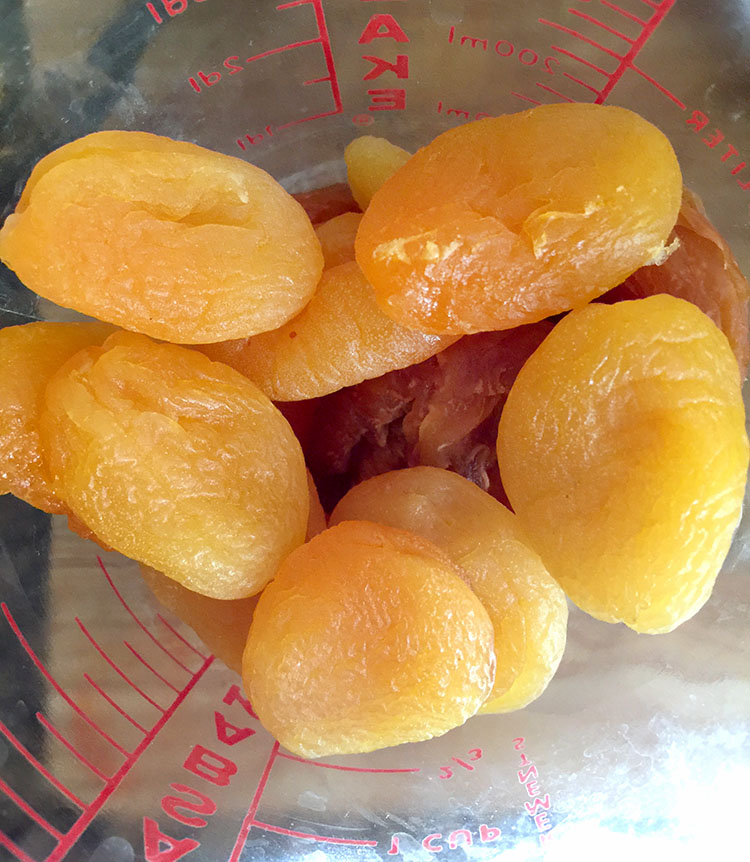
[T]o make things even more Californian, I picked up some dried California peaches in addition to the dried apricots that would be a part of the filling for the bars.
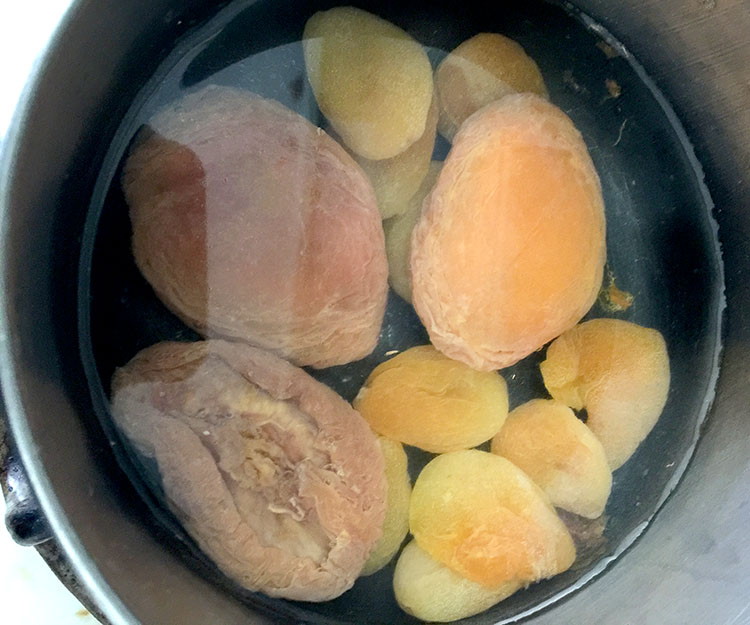
[T]he fruit was first poached to plump it up, then allowed time to cool.
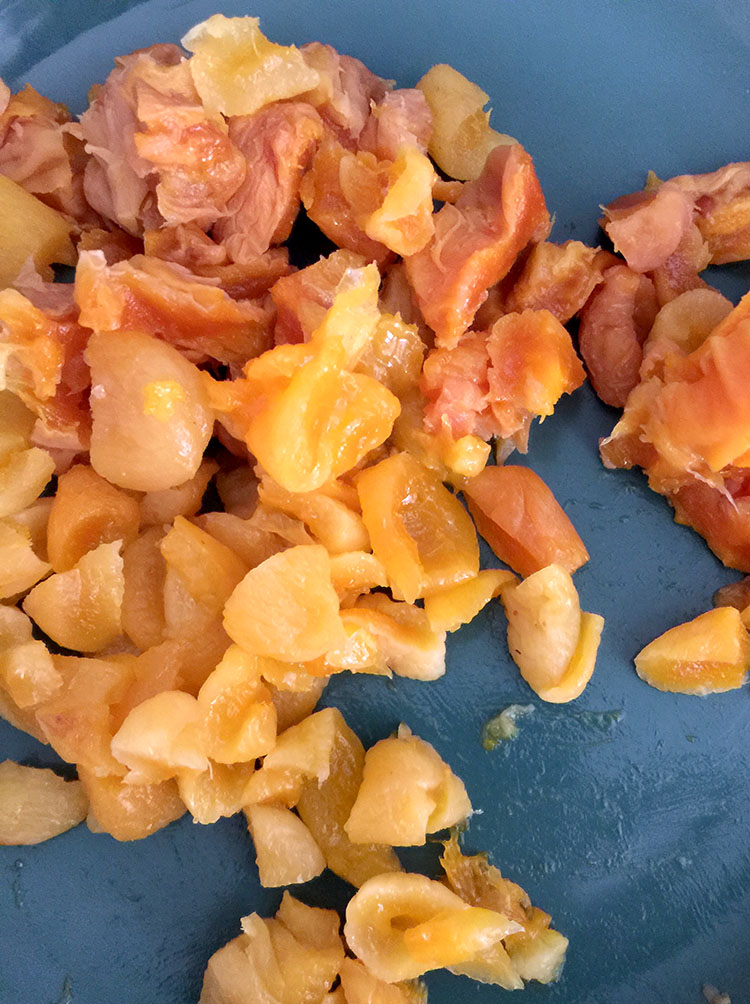
[T]hen, once the fruit had cooled, the peaches and apricots were chopped to await being added to the filling.
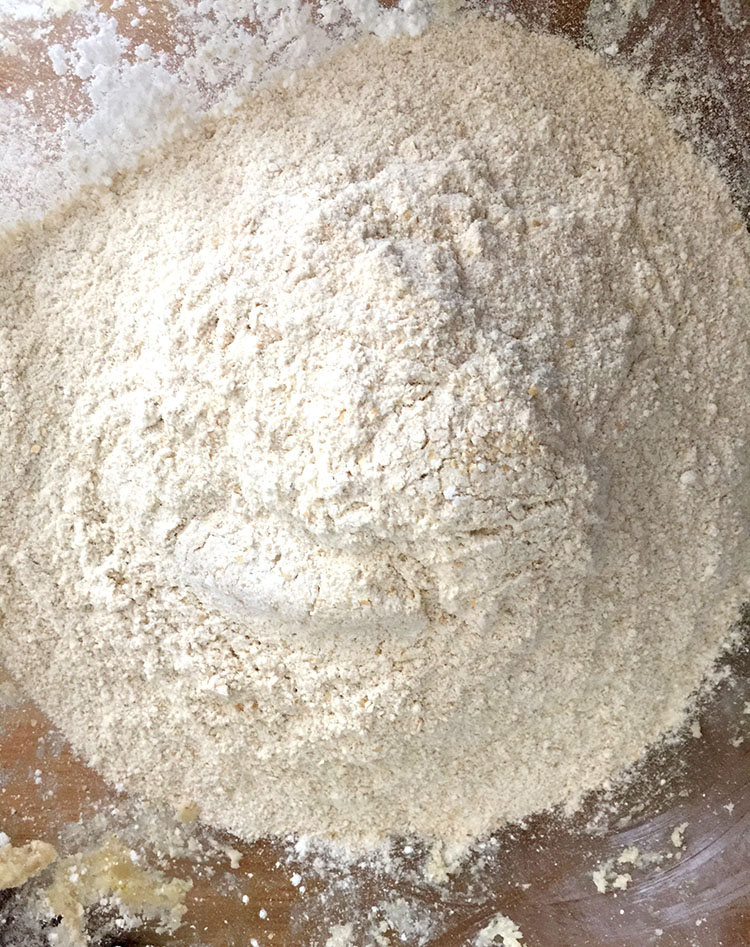
[T]he crust for the bars was started with a simple blend of the Sonoran Pastry Flour and an equal amount of confectioner’s sugar. To this, I put my own little addition of some fine lemon zest.
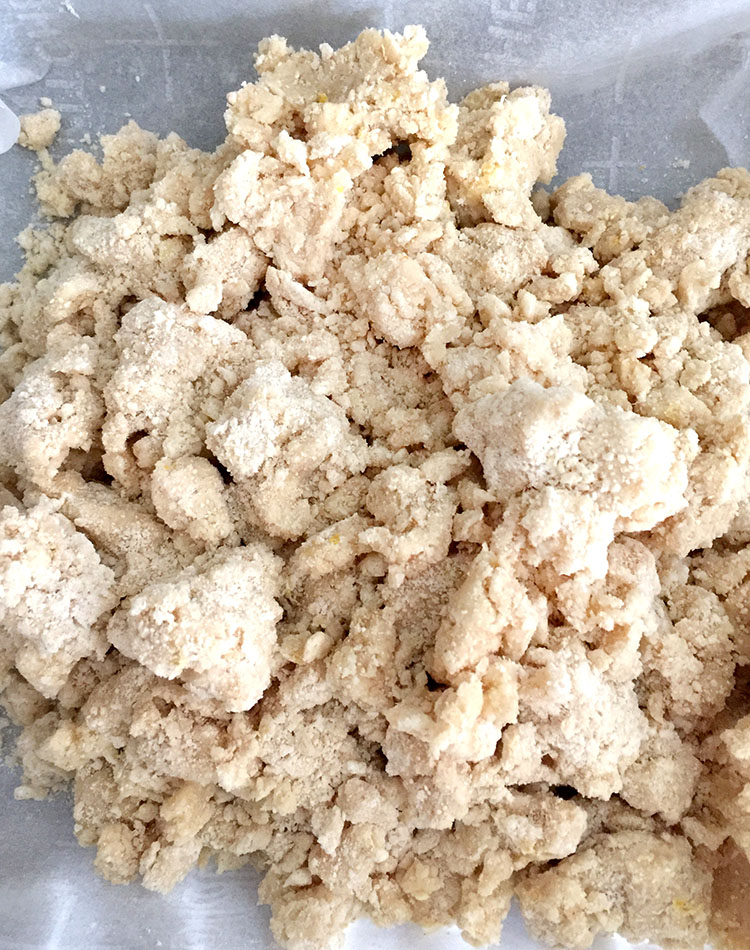
[A] stick of softened butter was added to make a crumbly dough.
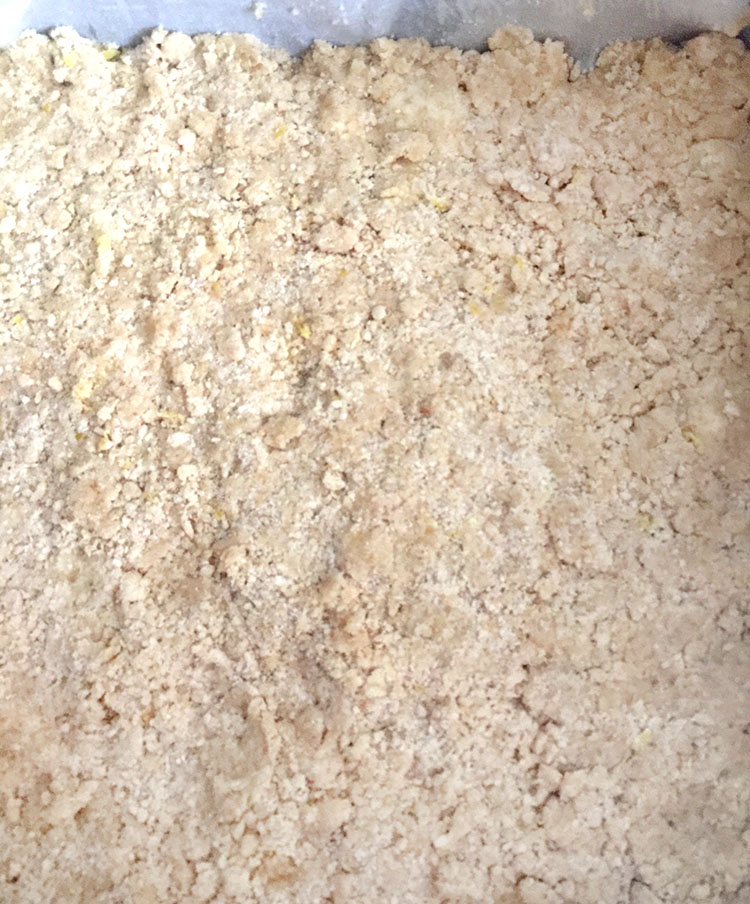
[I]n a parchment-lined square baking pan, I pressed the crust evenly over the bottom.
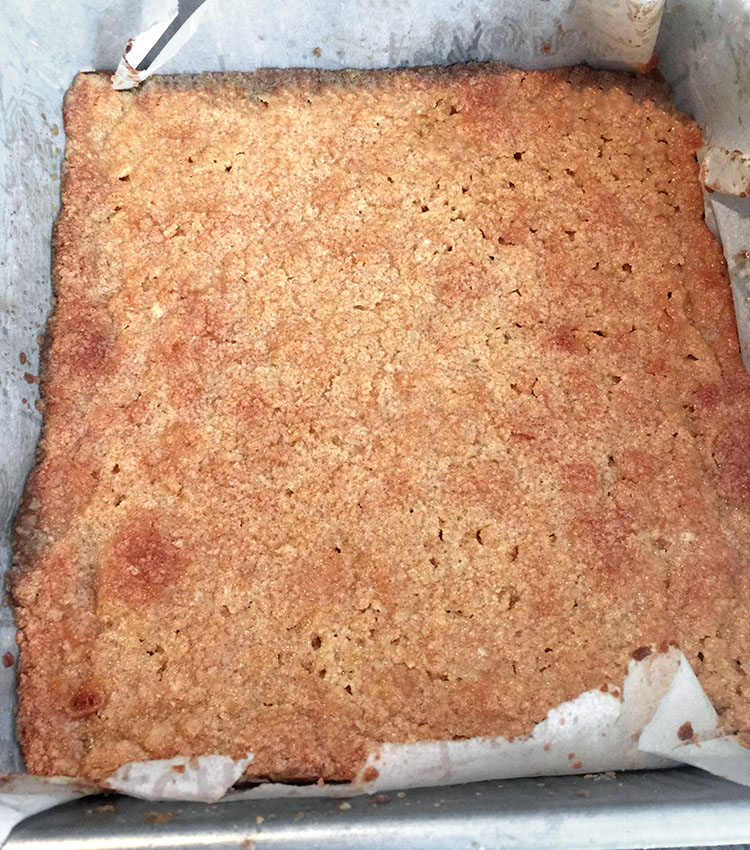
[T]he crust was par-baked to a light golden and allowed to cool a bit, during which time I started the filling.
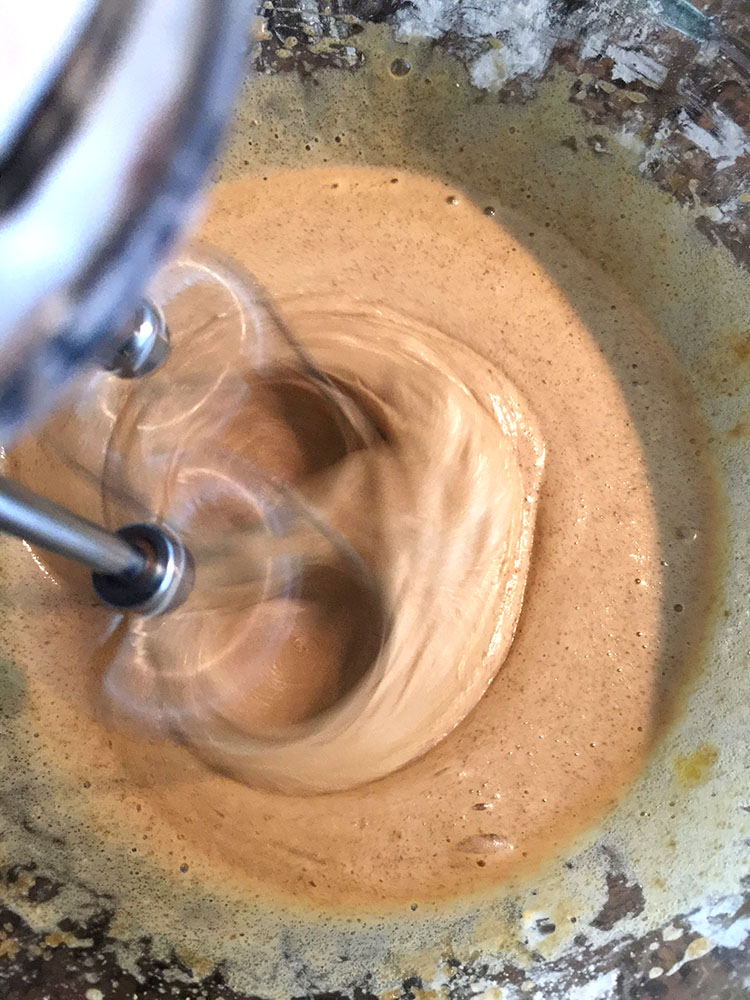
[E]ggs and brown sugar (yum) were first blended for this filling. Then more of the flour, baking powder, salt and vanilla extract were added.
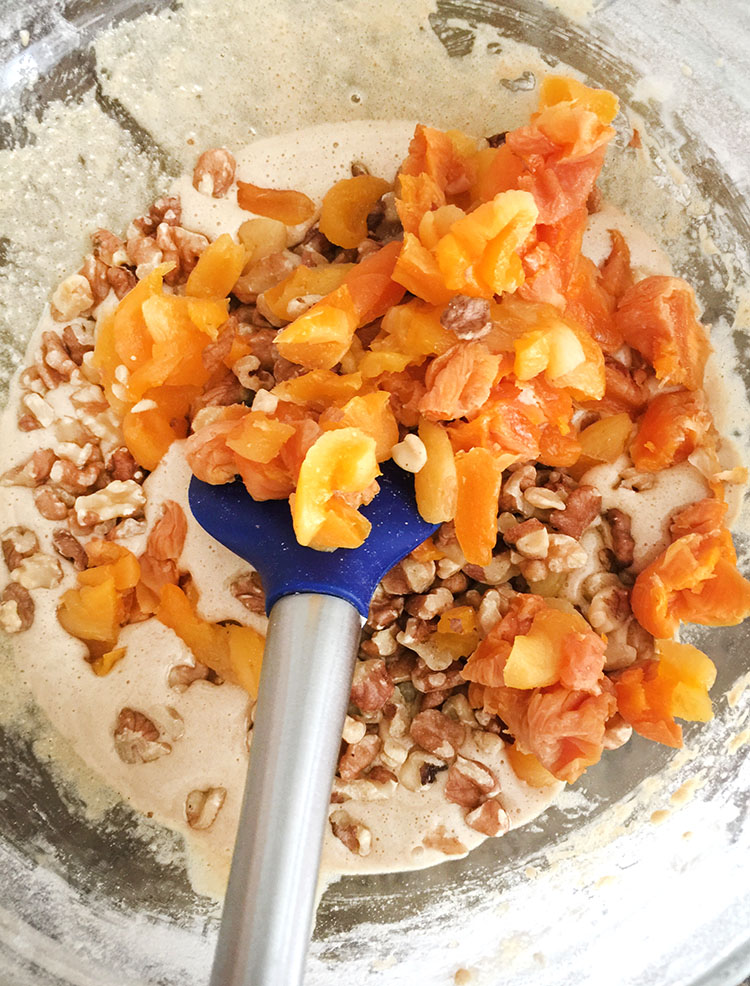
[]Lastly, the plumped apricots and peaches as well as the walnuts (which I had toasted) were folded into the lush filling and everything was poured over the crust and returned to the oven for more baking.
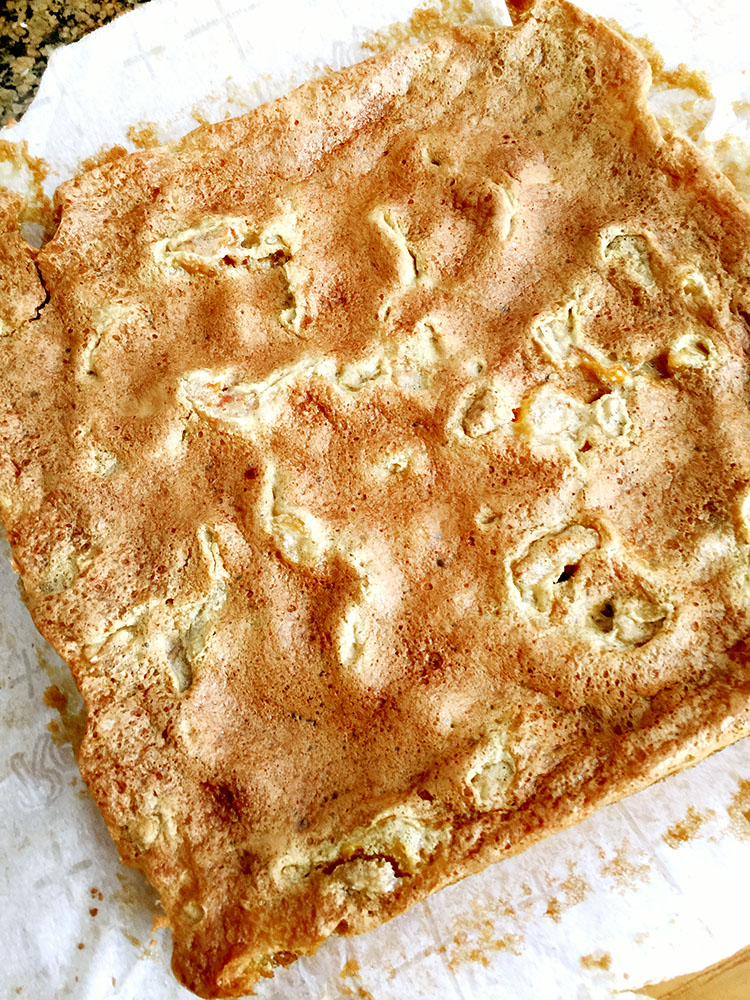
The bars emerged from the oven golden and a little rumply on top, rustic for sure, but smelling like something jammy and rich.
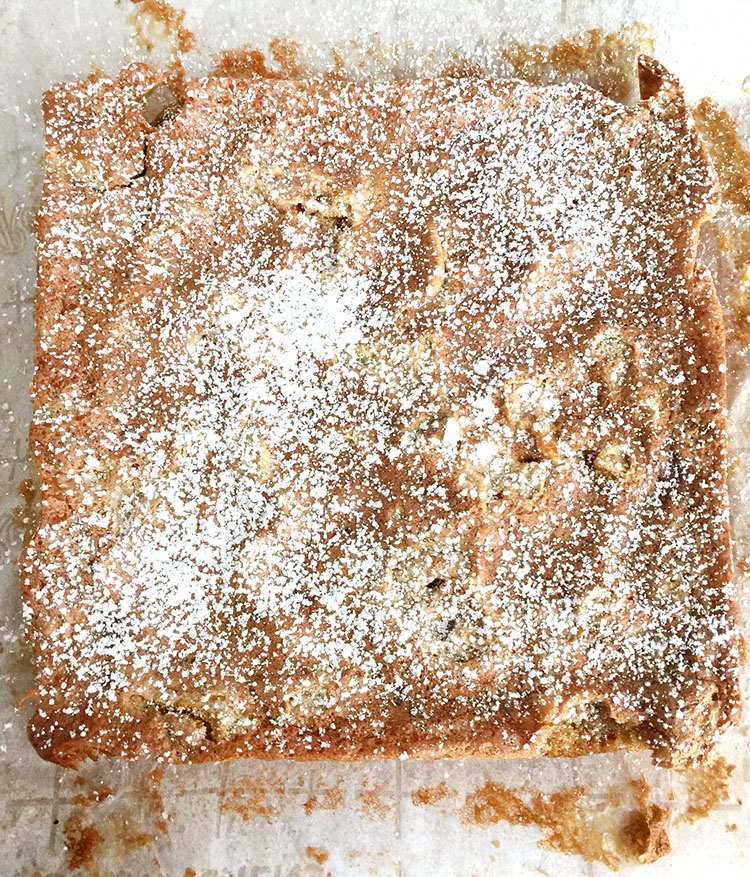
[O]nce cooled, the bars were flocked with a sprinkling of powdered sugar.
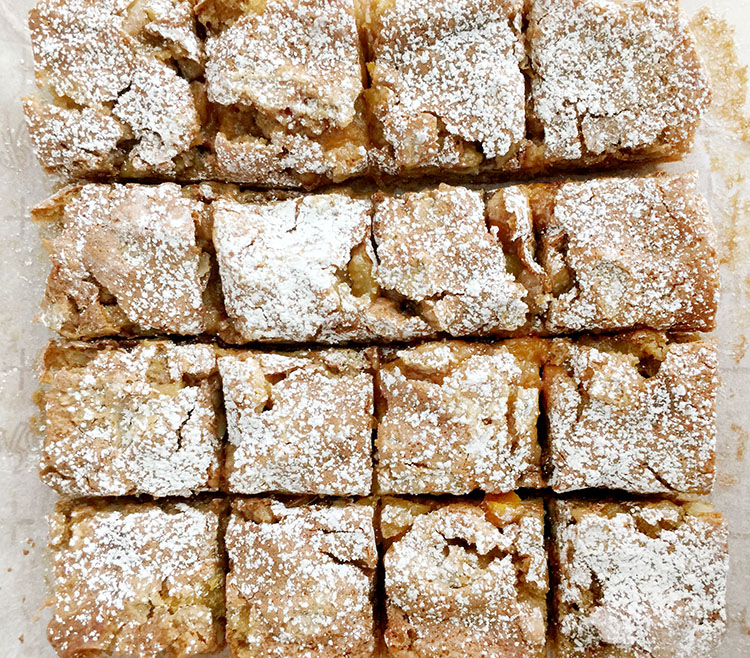
[I] cut the bars into squares…the filling appeared to be moist, sticky and even juicy, more like a tart than a cookie, really. But the bars held up.
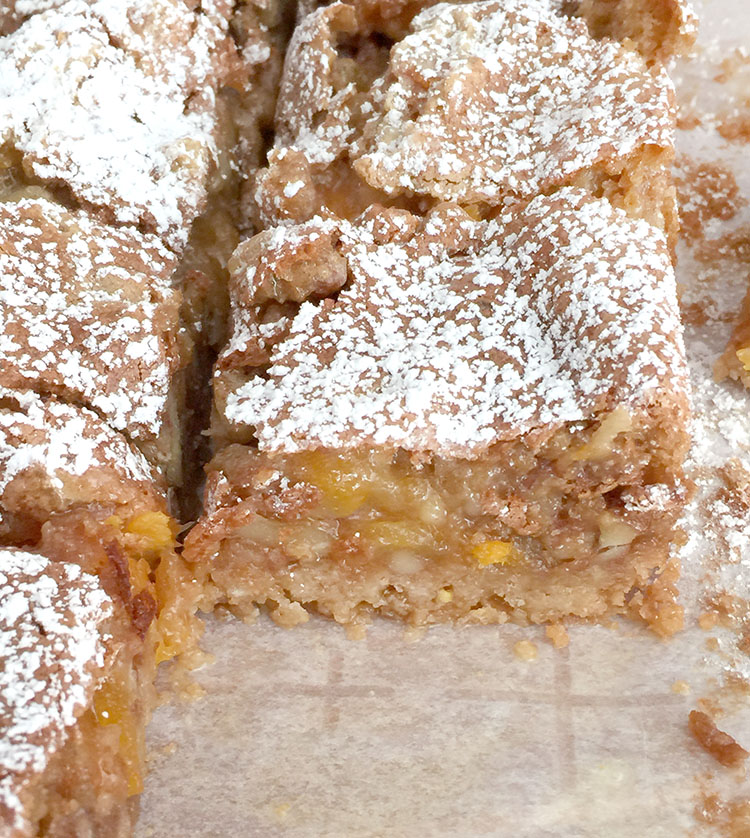
[W]hat a treat! The rich brown sugar filling, gushing with golden fruit and a little crunch from the nuts. The buttery, earthy crust was a perfect support. Regional history and ingredients in one square bar. Baking Californian might be a new thing.
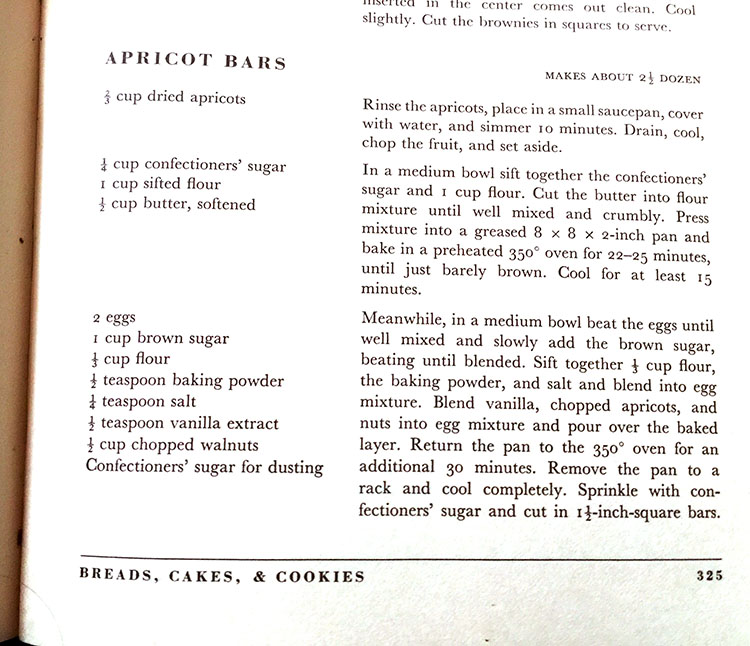
For more information about the Bale Grist Mill, visit https://www.parks.ca.gov/?page_id=482